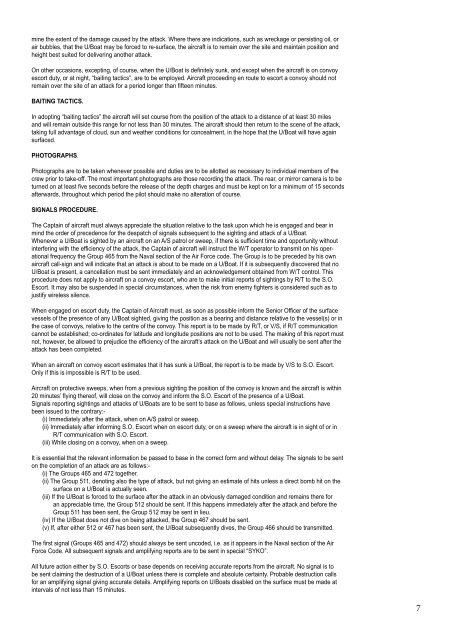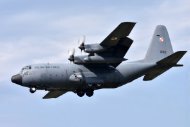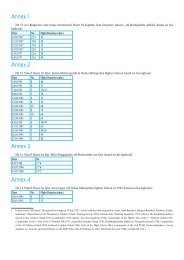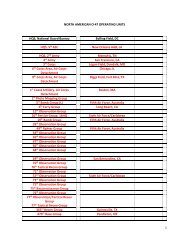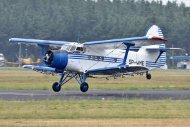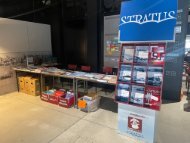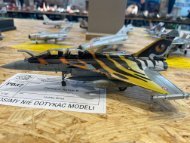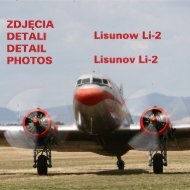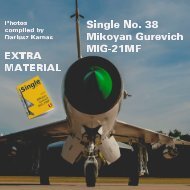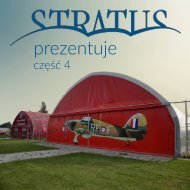B-17 CC Additional Material by Robert M Stitt
Boeing B-17 Fortress in RAF Coastal Command Service Second Edition Robert M Stitt Additional Material
Boeing B-17 Fortress in RAF Coastal Command Service
Second Edition
Robert M Stitt
Additional Material
- No tags were found...
Create successful ePaper yourself
Turn your PDF publications into a flip-book with our unique Google optimized e-Paper software.
mine the extent of the damage caused <strong>by</strong> the attack. Where there are indications, such as wreckage or persisting oil, or<br />
air bubbles, that the U/Boat may be forced to re-surface, the aircraft is to remain over the site and maintain position and<br />
height best suited for delivering another attack.<br />
On other occasions, excepting, of course, when the U/Boat is definitely sunk, and except when the aircraft is on convoy<br />
escort duty, or at night, “baiting tactics”, are to be employed. Aircraft proceeding en route to escort a convoy should not<br />
remain over the site of an attack for a period longer than fifteen minutes.<br />
BAITING TACTICS.<br />
In adopting “baiting tactics” the aircraft will set course from the position of the attack to a distance of at least 30 miles<br />
and will remain outside this range for not less than 30 minutes. The aircraft should then return to the scene of the attack,<br />
taking full advantage of cloud, sun and weather conditions for concealment, in the hope that the U/Boat will have again<br />
surfaced.<br />
PHOTOGRAPHS.<br />
Photographs are to be taken whenever possible and duties are to be allotted as necessary to individual members of the<br />
crew prior to take-off. The most important photographs are those recording the attack. The rear, or mirror camera is to be<br />
turned on at least five seconds before the release of the depth charges and must be kept on for a minimum of 15 seconds<br />
afterwards, throughout which period the pilot should make no alteration of course.<br />
SIGNALS PROCEDURE.<br />
The Captain of aircraft must always appreciate the situation relative to the task upon which he is engaged and bear in<br />
mind the order of precedence for the despatch of signals subsequent to the sighting and attack of a U/Boat.<br />
Whenever a U/Boat is sighted <strong>by</strong> an aircraft on an A/S patrol or sweep, if there is sufficient time and opportunity without<br />
interfering with the efficiency of the attack, the Captain of aircraft will instruct the W/T operator to transmit on his operational<br />
frequency the Group 465 from the Naval section of the Air Force code. The Group is to be preceded <strong>by</strong> his own<br />
aircraft call-sign and will indicate that an attack is about to be made on a U/Boat. If it is subsequently discovered that no<br />
U/Boat is present, a cancellation must be sent immediately and an acknowledgement obtained from W/T control. This<br />
procedure does not apply to aircraft on a convoy escort, who are to make initial reports of sightings <strong>by</strong> R/T to the S.O.<br />
Escort. It may also be suspended in special circumstances, when the risk from enemy fighters is considered such as to<br />
justify wireless silence.<br />
When engaged on escort duty, the Captain of Aircraft must, as soon as possible inform the Senior Officer of the surface<br />
vessels of the presence of any U/Boat sighted, giving the position as a bearing and distance relative to the vessel(s) or in<br />
the case of convoys, relative to the centre of the convoy. This report is to be made <strong>by</strong> R/T, or V/S, if R/T communication<br />
cannot be established; co-ordinates for latitude and longitude positions are not to be used. The making of this report must<br />
not, however, be allowed to prejudice the efficiency of the aircraft’s attack on the U/Boat and will usually be sent after the<br />
attack has been completed.<br />
When an aircraft on convoy escort estimates that it has sunk a U/Boat, the report is to be made <strong>by</strong> V/S to S.O. Escort.<br />
Only if this is impossible is R/T to be used.<br />
Aircraft on protective sweeps, when from a previous sighting the position of the convoy is known and the aircraft is within<br />
20 minutes’ flying thereof, will close on the convoy and inform the S.O. Escort of the presence of a U/Boat.<br />
Signals reporting sightings and attacks of U/Boats are to be sent to base as follows, unless special instructions have<br />
been issued to the contrary:-<br />
(i) Immediately after the attack, when on A/S patrol or sweep.<br />
(ii) Immediately after informing S.O. Escort when on escort duty, or on a sweep where the aircraft is in sight of or in<br />
R/T communication with S.O. Escort.<br />
(iii) While closing on a convoy, when on a sweep.<br />
It is essential that the relevant information be passed to base in the correct form and without delay. The signals to be sent<br />
on the completion of an attack are as follows:-<br />
(i) The Groups 465 and 472 together.<br />
(ii) The Group 511, denoting also the type of attack, but not giving an estimate of hits unless a direct bomb hit on the<br />
surface on a U/Boat is actually seen.<br />
(iii) If the U/Boat is forced to the surface after the attack in an obviously damaged condition and remains there for<br />
an appreciable time, the Group 512 should be sent. If this happens immediately after the attack and before the<br />
Group 511 has been sent, the Group 512 may be sent in lieu.<br />
(iv) If the U/Boat does not dive on being attacked, the Group 467 should be sent.<br />
(v) If, after either 512 or 467 has been sent, the U/Boat subsequently dives, the Group 466 should be transmitted.<br />
The first signal (Groups 465 and 472) should always be sent uncoded, i.e. as it appears in the Naval section of the Air<br />
Force Code. All subsequent signals and amplifying reports are to be sent in special “SYKO”.<br />
All future action either <strong>by</strong> S.O. Escorts or base depends on receiving accurate reports from the aircraft. No signal is to<br />
be sent claiming the destruction of a U/Boat unless there is complete and absolute certainty. Probable destruction calls<br />
for an amplifying signal giving accurate details. Amplifying reports on U/Boats disabled on the surface must be made at<br />
intervals of not less than 15 minutes.<br />
7


